- Home
- TV History
- Network Studios History
- Cameras
- Archives
- Viewseum
- About / Comments
Skip to content


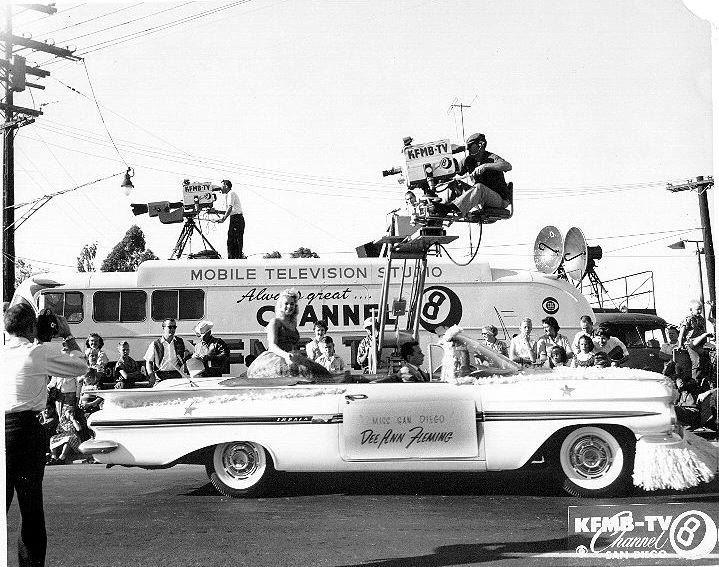

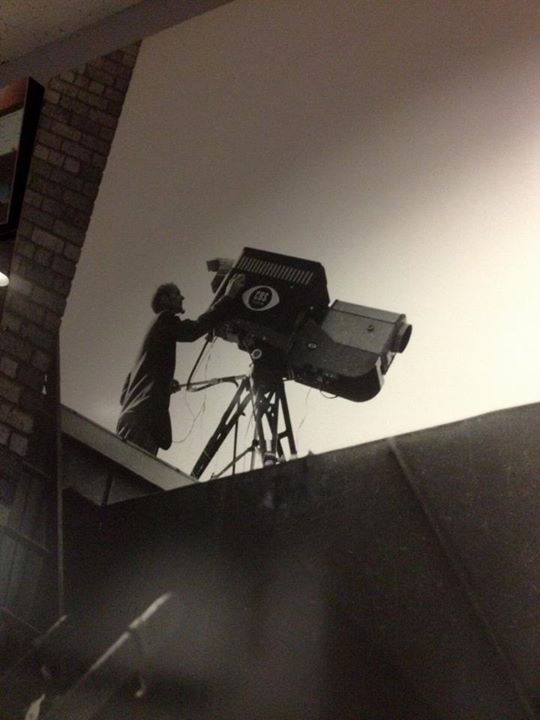





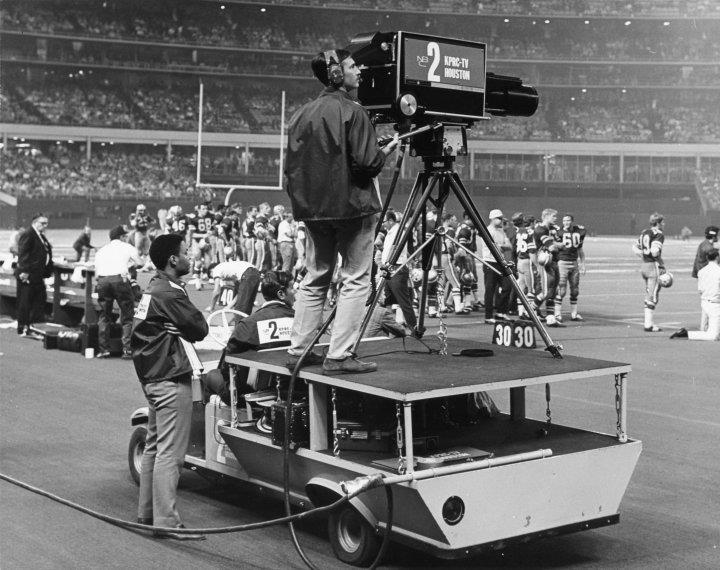





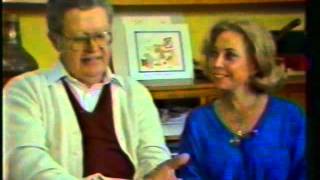

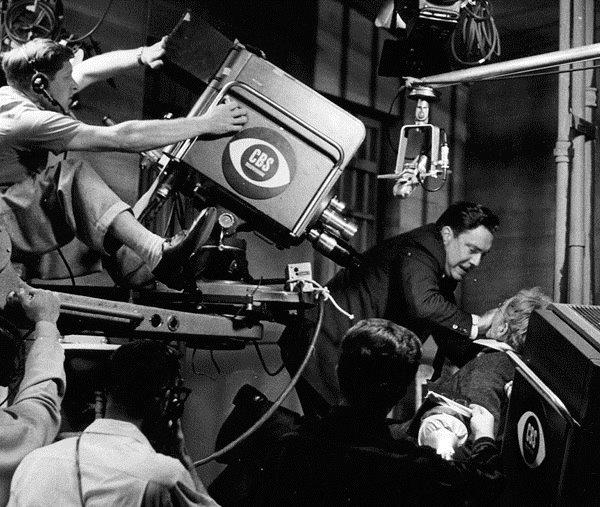













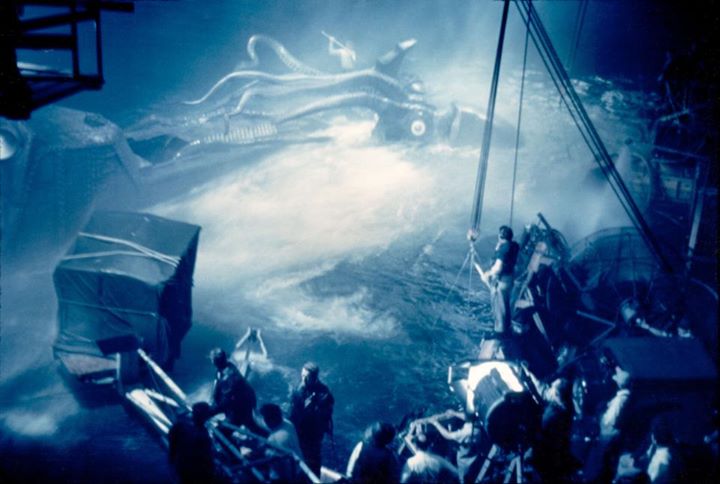





Posts in Category: TV History
Page 115 of 136
« Previous
1
2
3
4
5
6
7
8
9
10
11
12
13
14
15
16
17
18
19
20
21
22
23
24
25
26
27
28
29
30
31
32
33
34
35
36
37
38
39
40
41
42
43
44
45
46
47
48
49
50
51
52
53
54
55
56
57
58
59
60
61
62
63
64
65
66
67
68
69
70
71
72
73
74
75
76
77
78
79
80
81
82
83
84
85
86
87
88
89
90
91
92
93
94
95
96
97
98
99
100
101
102
103
104
105
106
107
108
109
110
111
112
113
114
115
116
117
118
119
120
121
122
123
124
125
126
127
128
129
130
131
132
133
134
135
136
Next » Johnny Carson: The Early Years…CBS, Part 2
On April 21, 2013
- TV History
Johnny Carson: The Early Years…CBS, Part 2
In the rare clip below, we see what is thought to be Barbara Eden’s first television appearance with Johnny Carson and his guest Rudy Vallee on ‘The Johnny Carson Show’ from CBS Television City.
The show ran from June of 1955 till March of ’56 and was a half hour prime time television variety show starring Johnny Carson that aired on Thursday nights at 10 PM.
While working as a staff writer on The Red Skelton Show, local Los Angeles television comedian Johnny Carson filled in as host when Skelton was injured during a show rehearsal. As a result of Carson’s performance, CBS created the primetime variety program The Johnny Carson Show, a traditional potpourri of comedy, music, dance, skits and monologues.
The short-lived series served as a precursor of what would come later for Carson, planting the seeds for sketches he would perform on the later The Tonight Show Starring Johnny Carson such as “Mighty Carson Art Players”. However, the show flopped in the ratings and was quickly cancelled.
In a 1978 profile of Carson in The New Yorker, Kenneth Tynan described the Johnny Carson Show as “a half-hour program that goes through seven directors, eight writers, and thirty-nine weeks of worsening health before expiring, in the spring of 1956.” Carson wound up hosting a daytime game show called Who Do You Trust? (1957–62) until he was tapped by NBC to replace the departing Jack Paar as host of The Tonight Show in 1962.
http://www.youtube.com/watch?v=i5VpEjqX3Us
One of Barbara Eden’s first TV appearances, still credited as Barbara Huffman or Barbara Morehead. Please visit www.barbara-eden-online.com for more rare pho…
Early Zoom Lenses
On April 19, 2013
- TV History
Early Zoom Lenses Day…
The lens on the far camera in this 1958 photo is, I think, a modified Angenieux 10×1. The cameras are Dumont 124Bs.
Early Zoom Lens: Part 2
On April 19, 2013
- TV History
Early Zoom Lens: Part 2
I think this is the Angenieux 10×1 zoom. The lens sled is a bit different than the Watson and it is a bigger lens. CBS used these a lot and as far as I know, these are manual and not electronic. This photo is from a wall inside the CBS Broadcast Center in NYC. Thanks to Gady Reinhold for the image.
Early Zoom Lens: Part 3
On April 19, 2013
- TV History
Early Zoom Lens: Part 3
This is the Watson 5×1 zoom made by Watson and Son, near London. This lens debuted in 1948 and is mounted on a Marconi Mark II at the 1954 Empire Games. The zoom command would be on the other side of the camera, but notice (1) the metal cabled focus demand wheel near the operators hand and (2) the early Vinten Mark I pan head.
Classic! Posed for their closeup,
On April 18, 2013
- TV History
Classic!
Posed for their closeup, here is the early heart of ABC Sports under Roone Arlidge. I think this photo was taken at Pebble Beach in 1967. The cameras, 12 RCA TK41s, 12 Norelco PC 70s and one RCA TK60 (for title cards) were set up in this line for an ABC ‘Wide World Of Sports’ story on how ABC covers sports events. Enjoy and Share!
Why GE Flourished In Texas And The Southwest: The LBJ Deal
On April 17, 2013
- Archives, TV History
Years ago, I was told a story of political intrigue by an old Texas television veteran. He will remain nameless, and as you read on, you’ll understand why. Below is an article from Slate that will show you how what I am about to tell you dovetails into how the LBJ financial empire was built…on political favors, threats and clout.
Remember, Lady Bird (details below) became a radio station owner (KTBC AM later KLBJ AM & FM) in 1942 and a TV station owner (KTBC TV) in 1952. LBJ went to the House Of Representatives in 1937 and to the Senate in 1948.
In a nutshell, when the TV station was built, Senator Johnson told RCA chief David Sarnoff that he wanted the best RCA had for his station in the Texas capitol, but…he did not want Sarnoff to sell RCA equipment to any other Texas broadcasters…radio or TV. With RCA military contracts pending, Sarnoff reluctantly agreed.
In 52, Dumont was fading fast and only GE and Marconi equipment were available in Texas. GE didn’t know the real reason they were getting all this new business, but jumped in with both feet and their sales pitch was this…”since so much GE equipment was being sold in Texas, it was obvious that GE was better than RCA”. As we know, that wasn’t the case, but that’s why there were so many GE installations in Texas and the Southwest. Below is the fascinating Slate article.
How Lady Bird and Lyndon came by their millions.
By Jack Shafer|Posted Monday, July 16, 2007
The perturbed spirit of Lady Bird Johnson will rest until somebody writes a more complete article about how she and her husband became millionaires. Of the top dailies, only the New York Times and the Washington Post obituaries slow to savor the political skulduggery she and her husband, Rep. Lyndon Baines Johnson, relied on to pour the foundation of her business empire. Some of the clips find her scheme to “beautify” America more interesting than her blatant exercise in political graft.
Robert A. Caro examines the roots of the Johnson broadcasting fortune in the second volume of his biography of LBJ, The Years of Lyndon Johnson: Means of Ascent. Although Lyndon Johnson always protested that Lady Bird bought the station on her own and that he applied no political pressure to help her, Caro easily proves otherwise.
In 1943, the year Lady Bird Johnson purchased KTBC, the Federal Communications Commission, which reviewed all broadcast-license transfers, was close to being abolished, Caro writes. Lyndon Johnson used his political influence in both Congress and the White House to prevent that from happening. The FCC was among the most politicized agencies in the government, Caro asserts, and it knew who its friends were.
Johnson socialized with FCC Commissioner Clifford Durr at the time, “sometimes at Durr’s home, sometimes at his own,” although Durr says Johnson never mentioned Lady Bird’s application for KTBC’s license. Lady Bird, however, directly approached Durr about the station, and Lyndon phoned James Barr of the FCC’s Standard Broadcast Division. “He wanted to get a radio station, and what I remember is, he wouldn’t take no for an answer,” Caro quotes Barr.
Legendary Democratic fixer Tommy “The Cork” Corcoran also helped with the KTBC application—”all up and down the line,” is how Corcoran put it. Asked in an interview whether Johnson’s status as a member of Congress helped his wife’s application, Corcoran said, “How do you think these things work? These guys [FCC staffers] have been around. You don’t have to spell things out for them.”
The Los Angeles Times and USA Today obituaries make it sound as if KTBC were a congenitally unprofitable station at the time of Lady Bird’s bid and give the impression that she was the lone suitor for the property. That was not the case, as Caro documents the identities of the other interested bidders.
Once Lady Bird completed her purchase of KTBC, the “five years of delays and red tape, or delays and unfavorable rules” from the FCC that had stymied the previous owners “vanished … and slowness was replaced by speed,” according to Caro. In short order she got permission to broadcast 24 hours a day (KTBC had been a sunrise-to-sunset station) and move it to 590 on the dial—”an uncluttered, end of the dial” where it could be heard in 38 surrounding Texas counties. It was no coincidence. Lyndon and Lady Bird recruited a new station manager, promising 10 percent of the profits, and Lyndon told him that the changes in the license restrictions that would make KTBC a moneymaker were “all set.” In 1945, the FCC OK’d KTBC’s request to quintuple its power, which cast its signal over 63 counties.
When Lyndon visited William S. Paley, president of CBS radio, and asked if KTBC could become a CBS affiliate and carry its lucrative programming, he didn’t have to spell out why the request should be granted. The radio networks feared the regulators in Washington as well as the members of Congress who regulated the regulators. KNOW in Austin had been repeatedly denied the affiliation because a San Antonio “affiliate could be heard in Austin.” CBS Director of Research Frank Stanton approved Johnson’s request.
Johnson shook down powerful companies to advertise on the station. Local businesses that wanted Army camps to remain located in Austin knew one way to secure Lyndon’s help was to advertise on KTBC. Caro writes:
… Mrs. Johnson’s ability as a business woman was not the crucial factor in the acquisition of the station or, once it was acquired, in its early growth. … Lyndon Johnson had worked at politics for years to achieve power; now he was working at politics to make money.
Under Texas law, the station belonged solely to Lady Bird because she purchased it with her inheritance. But as her spouse, Lyndon owned half of all the profits. He was ultra-active in recruiting staff and running the operation, and by 1948, Caro writes, he was telling his friends that he was a millionaire.
The Johnsons earned thousands from their radio station but millions from their TV stations, writes former FCC official William B. Ray in his book, FCC: The Ups and Downs of Radio Regulation. The commission allocated one commercial station to Austin in the early 1950s, and the Johnsons were its sole applicant. “Filing a competing application would have been a waste of money,” Ray writes, because of the Johnsons’ political clout. “Whenever there was a business matter to be discussed between CBS and the LBJ stations, Johnson would summon the appropriate CBS personnel to the White House to discuss it,” he continues.
Caught With Your Pants Down? How’s this for a gag?
On April 16, 2013
- TV History
Caught With Your Pants Down?
How’s this for a gag? The cast and crew at NBC’s Brooklyn Studios laugh along with Mitch Miller at ‘undress rehearsal’.
‘Rocky And Bullwinkle’…The Surprising Backstory!
On April 15, 2013
- TV History
‘Rocky And Bullwinkle’…The Surprising Backstory!
Production began in February 1958 with the hiring of voice actors June Foray, Paul Frees, Bill Scott, and William Conrad. Ward hired most of the rest of the production staff, including writers and designers, BUT…no animators were hired!?! Why? Because Ward was able to convince some friends at Dancer, Fitzgerald, & Sample (an advertising agency that had General Mills as a client) to buy an animation studio in Mexico called Gamma Productions, originally known as Val-Mar Animation.
This outsourcing of the animation for the series was considered financially attractive by primary sponsor General Mills, but caused numerous problems. In a 1982 interview by animation historian Jim Korkis, Bill Scott described some of the problems that arose during production of the series: “We found out very quickly that we could not depend on Mexican studios to produce anything of quality. They were turning out the work very quickly and there were all kinds of mistakes and flaws and boo-boos. They would never check with us on details…mustaches popped on and off Boris, Bullwinkle’s antlers would change, colors would change and costumes would disappear. By the time we finally saw it, it was on the air.”
General Mills had signed a deal to sponsor the cartoon, under the condition that the show be run in a late-afternoon time slot, where it could be targeted toward children. The show was broadcast for the first time on November 19, 1959, on the ABC television network under the title Rocky and His Friends twice a week, on Tuesday and Thursday afternoons, following American Bandstand at 5:30 p.m. ET, where it was the highest-rated daytime network program.
The show moved to the NBC network starting September 24, 1961, broadcast in color, and first appeared on Sundays at 7 p.m. ET, just before Walt Disney’s Wonderful World of Color. Bullwinkle’s ratings suffered as a result of being aired opposite perennial favorite Lassie. A potential move to CBS caused NBC to reschedule the show to late Sunday afternoons (5:30 p.m. ET) and early Saturday afternoons in its final season. NBC canceled the show in the summer of 1964. It was shopped to ABC, but they were not interested. However, reruns of episodes were aired on ABC’s Sunday morning schedule at 11 a.m. ET until 1973, at which time the series went into syndication.
An abbreviated fifteen-minute version of the series ran in syndication in the 1960s under the title The Rocky Show. This version was sometimes shown in conjunction with The King and Odie, a fifteen-minute version of Total Television’s King Leonardo and His Short Subjects. The King and Odie was similar to Rocky and Bullwinkle in that it was sponsored by General Mills and animated by Gamma Productions. NBC later aired Bullwinkle Show reruns at 12:30 p.m. ET Saturday afternoons during the 1981-1982 television season.
The Voices Of ‘Rocky And Bullwinkle’
On April 15, 2013
- TV History, Viewseum
The Voices Of ‘Rocky And Bullwinkle’
Here are June Foray and Bill Scott and at the end, William Conrad. I’ll let June and Bill tell you who’s voices they did! Enjoy!
The ‘Dance’
On April 12, 2013
- TV History
The ‘Dance’
In the days before video tape, wireless mics and zoom lenses, camera rehearsals for live shows at the network level were a combination of art and technology. Each scene had to be blocked and practiced to get the shots, but not get the boom mic, other cameras or the wrong backdrops. Hitting the marks for the crew and equipment was as important as the actors hitting their marks! All that becomes very apparent as you look at this photo from Playhouse 90 from Television City in 1954. SNL is the only place still left that embodies the craft of live television as it was done by the pros before them.
Last Of The Monochrome Cameras: The RCA TK60
On April 12, 2013
- TV History
Last Of The Monochrome Cameras: The RCA TK60
The great TK60 actually began as the TK12 and was introduced at the 1960 NAB. the TK12 was RCA’s first new camera design in 8 years and had what would become the “RCA New Look”, blue color for all their TV equipment. Electronically it used the new 4.5″ IO tube. It was restyled at the 1961 NAB with a tally light on top, updated again in 1963 to become the TK60 which had the additional exhaust fan and ‘chimney’ on top just behind the tally.
The Masters Tournament: TV Coverage History 1956 Till Today
On April 11, 2013
- TV History
The Masters Tournament: TV Coverage History 1956 Till Today
First, if you are working at the Masters, please send us photos and tell us how many cameras are being used this year. At the link below, you’ll find some very interesting history and little known facts about how the broadcasts are done from Augusta. Enjoy!
http://classicsportsmedia.blogspot.com/2013/04/history-of-masters-golf-tournament-on.html
Remember ABC’s White Cameras?
On April 11, 2013
- TV History
Remember ABC’s White Cameras?
ABC veteran cameraman Don ‘Peaches’ Langford is pictured here on one of his first assignments in the mid 60s. He’s shooting the top of a ski run from about a mile away, and notice the lens. It’s not a Zoomar…it’s a telescope lens with no zoom and the focus was done manually. The camera is an RCA TK10.
‘Bonanza’: A Funny Story From The Set…
On April 9, 2013
- TV History
‘Bonanza’: A Funny Story From The Set…
During the filming of one episode, Lorne Greene was required to jump off a small ledge into a lake five feet below. Michael Landon later recalled that when Greene did the stunt, he jumped into the water feet first and went completely under, but his hair piece came off and floated on the surface of the lake. Landon and the rest of the crew watched to see what would happen. After a short while, Greene’s hand shot up out of the water, grabbed the hairpiece, and pulled it down. Greene emerged from the lake, wearing his hairpiece slightly askew. He walked nonchalantly past the snickering crew, and went into his trailer without saying a word.
“The Monkeys” Screen Tests
On April 9, 2013
- TV History
The Monkeys! Did You Know This?
The Beatles movie ‘Hard Day’s Night’ was the catalyst that brought the idea for this show to life. They already had the idea for the show and originally thought about using ‘The Lovin Spoonful’ band to play the lead rolls, but they signed a record deal before the show could sign them. Davy Jones had played the roll of the artful dodger in ‘Oliver’ on Broadway and was someone the producers wanted, but they needed 3 more band members, so they ran this add in September of 1965…
“Madness!! Auditions. Folk & Roll Musicians-Singers for acting roles in new TV series. Running Parts for 4 insane boys, age 17-21. Want spirited Ben Frank’s types. Have courage to work. Must come down for interview.”
437 applied and below are the screen tests of the final eight contenders…all four monkeys and four more finalists. Note, there is no audio on the very first short clip. Enjoy!
http://www.youtube.com/watch?v=63nhSFFFfJ4
Rare black and white footage of Mike Nesmith, Micky Dolenz, Peter Tork, and Davy Jones auditioning for the 60s hit NBC television program The Monkees.
Classic: ‘I Love Lucy’
On April 8, 2013
- TV History
Classic: ‘I Love Lucy’
Shooting on the living room set, we have Houston Fearless Panoram dollies on the left and right and a McAllister crab dolly in the middle. Notice the bank of floodlights on the front of each dolly. Looks like this was the day they handed out new crew jackets.
What Do ‘Jaws’ & ‘20,000 Leagues’ Have In Common?
On April 7, 2013
- TV History
What Do ‘Jaws’ & ‘20,000 Leagues’ Have In Common?
Before I tell you, I thought you would be interested in knowing this interesting bit of history. When it came time for “Bruce” the shark to be built for ‘Jaws’, unbelievably, the Universal prop department told Steven Spielberg that they were too busy on other films and that he would have to build it himself. After the initial shock and panic wore off, the film’s special effects people remembered that Mr. Bob Mattey had just retired from Disney. Having built the giant squid from ‘20,000 Leagues Under The Sea’ in 1954, Mattey was the perfect choice and Spielberg was able to coax him out of retirement long enough to build the sharks for ‘Jaws’.
FASCINATING! The Making Of Jurassic Park…
On April 6, 2013
- TV History
FASCINATING! The Making Of Jurassic Park…Must See!
The bottom link is to the must see 40 minute documentary of how ALL the movie was done, with miniatures, CGI (which was brand new), and FULL SIZE models with Spielberg and all the artists, but…to give you a quick look at the amazing quality of movement on the full size T Rex, I’ve included a look at him in rehearsal at the top link. The documentary is narrated by James Earl Jones, so you know it’s GOOD! Take your time and enjoy this!
http://www.youtube.com/watch?v=B4J9TBlFxAg
http://www.youtube.com/watch?v=vxiKz8BJICU
SUBSCRIBE to SWSCA on YouTube: http://bit.ly/Zp70T4 “Jurassic Park” Full-Size Animatronic T-Rex Rehearsal Learn how we do it: https://www.stanwinstonschool.c…
WRGB: Historic In Many Ways
On April 6, 2013
- TV History
WRGB: Historic In Many Ways
Before the history, take a look at these GE Iconoscope cameras. As this was a GE owned property, these could actually be some of the first GE Iconoscopes they made. Over the years, GE tested a lot of equipment here.
WRGB claims to be the world’s first television station. It traces its roots to an experimental station founded on January 13, 1928 from the General Electric facility under the call letters W2XB. In 1939, it began sharing programs with W2XBS (forerunner of WNBC-TV) in New York City, becoming NBC’s first television affiliate. That relationship would last for 42 years.
In 1941, the station moved into a state-of-the-art studio on Washington Avenue in Schenectady. It was the first building in the nation specifically designed for television. On February 26, 1942, W2XAF received a commercial license as WRGB, the fourth in the nation and only the second one outside of New York City. By then, it was operating on the VHF band with modern 525-line resolution and FM sound on Channel 4.
Page 115 of 136
« Previous
1
2
3
4
5
6
7
8
9
10
11
12
13
14
15
16
17
18
19
20
21
22
23
24
25
26
27
28
29
30
31
32
33
34
35
36
37
38
39
40
41
42
43
44
45
46
47
48
49
50
51
52
53
54
55
56
57
58
59
60
61
62
63
64
65
66
67
68
69
70
71
72
73
74
75
76
77
78
79
80
81
82
83
84
85
86
87
88
89
90
91
92
93
94
95
96
97
98
99
100
101
102
103
104
105
106
107
108
109
110
111
112
113
114
115
116
117
118
119
120
121
122
123
124
125
126
127
128
129
130
131
132
133
134
135
136
Next »